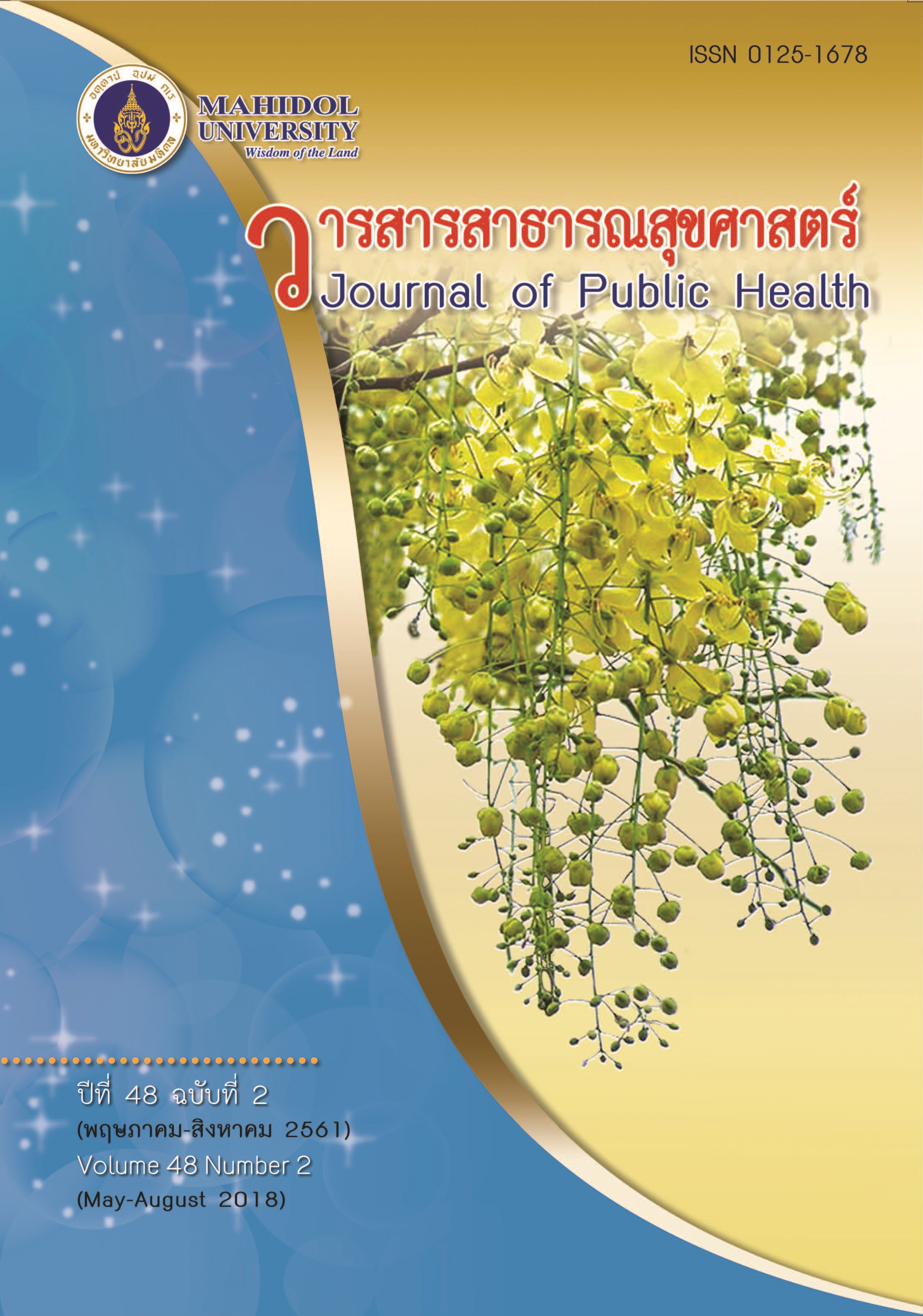Comparisons of Quality of Life among the Elderly in Urban, Semi-urban and Rural Communities in Sukhothai Province, Thailand
Keywords:
quality of life, elderly, rural community, semi-urban community, urban communityAbstract
This research was a cross-sectional study aimed to compare the quality of life among the elderly among in urban, semi-urban and rural communities in Sukhothai Province. The subjects comprised 873 elderly recruited using multistage random sampling. A questionnaire was administered through face-to-face interviews and data was analyzed using frequency, percentage, mean, standard deviation, Z-score and One-way Anova. The results revealed significant factors included being female (56.6%), average age 69.3 years, married (68.2%), primary school (80.8%), average monthly income 2,477.6 THB , disease identification (59.1%) and living alone (7.8%). The sample groups had quality of life at moderate level (48.5%), at lower level (39.2%) and at high level (12.3%). With regard to Z-score analysis; the elderly in a rural community reported the highest quality of life score (Z=0.1257), elderly in a semi-urban community had average score (Z=-0.0346) and those in an urban community had the lowest score (Z=-0.0911). Residential area revealed a significantly different quality of life among the elderly (p<0.05). From post hoc analysis, the elderly in a rural community had significantly higher quality of life scores than those in an urban community (p<0.05). Therefore, relevant offices should support the involvement of the elderly in urban and semi-urban communities for social participation and family activities whereas those in a rural community should emphasize self-care skills for a higher quality of life.
Downloads
Published
Issue
Section
License
Creative Commons License CC-BY-ND


